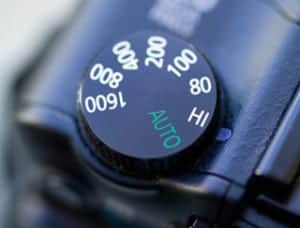
Today's article is a review of Sony DSLR cameras. Every time I mention differences between Canon and Nikon DSLRs, I get (often angry) emails from readers (almost assuredly Sony shooters), who want an explanation as to why I do not talk more about Sony DSLRs. I don't want to start an interstellar war over petty differences between camera manufacturers, but I do think that we photographers should be knowledgeable about the real differences between the camera systems so that we can make informed decisions about which brand will earn our hard earned money.
I want to mention up-front that I would LOVE to see Sony succeed in the DSLR market–if for nothing else than to put some fire under the seat of Nikon and Canon. In my mind, competition is always a good thing. I'm rooting hard for Sony, but as you'll see below, there are some serious drawbacks to buying into the Sony system right now.
Benefits of Sony DSLR Cameras (Pros)
Pro #1: Autofocus for video
Many Sony DSLRs use what is called a “pellicle mirror” to show the image in the viewfinder. In contrast to a traditional DSLR mirror that is opaque, the pellicle mirror allows most of the light to go to the sensor while using some of the light to produce the electronic viewfinder image. This technology is new to popular DSLRs, but it has been used in cameras for years.
There are many advantages to using this technology in Sony DSLRs, and one of them is full-time autofocus for video. It also means that the viewfinder doesn't go dark when a picture is taken. Unfortunately, it also means that some of the light that could be sent to the sensor is soaked up in the mirror. You know what that means… worse low light performance. Sony claims to overcome this limitation with advanced noise reduction, but it always makes me think how good the camera could be if it used all of the light. Low light performance is the number one most important feature that I look for in a DSLR.

Pro#2: Customizable Auto ISO
I have been asking for this feature for years and I'm so glad to see that Sony has put this feature in the Sony a77 DSLR. I love shooting in aperture priority mode whenever I can, but I have to keep watching my shutter speed so that it doesn't dip too low for shooting in the evening when the light is fading fast. Imagine if I could set my aperture and shutter speed, and then know that the ISO will automatically increase to allow for proper exposure up to a certain level where I know that the camera won't produce too much noise. Very useful for wildlife and sports photographers.
Pro #3: High frame rates
When you see the specs of Sony DSLRs, nothing will impress you more than the frame rates. It is truly remarkable. For example, the Sony a77 can capture 12 frames per second of 24 megapixel images. While I certainly want to use that every day, it would be INCREDIBLE for shooting sports, wildlife, or kids. I better stop writing about 12 frames per second before I can't hold myself back from Amazon.com. It's begging me to buy one just for the times when I neeeeeed that kind of speed.
Pro #4: Price
While the recent releases from Sony have not been overly price conscious, it has generally produced DSLRs that are slightly more affordable than their Canon and Nikon competitors.
Pro #5: GPS
Someone needs to send the message to Canon and Nikon that many or most of us would gladly pay $50 more to get GPS built into our DSLRs. Sony has apparently understood that message and has been better about including it in their cameras than Canon and Nikon.
Pro #6: In-camera image stabilization
Whereas Canon and Nikon have placed the image stabilization/vibration reduction feature inside each lens, Sony puts the image stabilization mechanism in the camera itself. While I have not seen any head-to-head comparisons of the two approaches to say which performs better, most people say that this is an advantage for Sony. Having the mechanism in the camera means you do not have to pay to have the technology put in each and every lens, which is a nice feature.
Drawbacks to Sony DSLR Cameras (Cons)

Con #1: Proprietary… incredibly proprietary
One of the things about Sony that really bothers me is their reluctance to embrace open standards. Canon and Nikon own so much of the market share that they can produce proprietary file formats and lens mounts and still know that there will be plenty of products available for their customers. On the other hand, Sony is tremendously proprietary even though they are the small fish in the DSLR pond.
For many years, Sony created its own memory cards (Memory Stick brand) that were the only memory cards that would work in their cameras. That means if you had a point-and-shoot from another company and switched to Sony, you'd have to buy a bunch of new Memory Sticks that were then useless when you switched brands. Also, their Memory Sticks were usually more expensive.
Sony has continued their proprietary regime with file formats. Their cameras shoot their own proprietary file format (like Canon and Nikon). Unfortunately, they are smaller than Canon and Nikon, so when you get a new Sony DSLR, you may find yourself unable to edit the RAW files with popular digital image editing programs until the companies update the software, which can take quite a bit longer than the updates for Canon and Nikon.
That's not it! Sony has recently released the NEX line of cameras. The 4/3 lens mount was an open standard followed by Panasonic and Olympus. Did they follow the open standard so that we could use the lenses from one manufacturer on the camera of another? No. This divided the market and made things tougher for photographers. They had an opportunity to follow the standard and chose not to. Unfortunately, Nikon has chosen to follow their lead with a proprietary lens mount on the V1 and J1.
But there's more! At least Canon and Nikon have stuck with the same hotshoe mount for flashes. Sony…. chose a different route. Ugh! That means the third party flashes like the YN-560 won't work with the Sony unless you buy the special YN-560 Sony version. That's all fine and dandy, but it means that Sony users also don't have access to the multiplicity of cheaper flash triggers and other flash goodies that their Nikon and Canon buddies can use. If you're interested in flash photography, this is a HUGE drawback in my opinion.
In short, Canon and Nikon are into the proprietary thing, but Sony is proprietary to the extreme. This problem is compounded by the fact that they are a smaller market and so third party manufacturers are less apt to design for them. This may not seem like a big deal until you're ready to get into flash photography, and then you'll hate yourself for buying into Sony's walled garden.
Con #2: Dramatically reduced lens options
I know I'll draw comments on this one because Sony shooters love their Zeiss and Zuiko lenses. I'm NOT saying that Sony has no good glass available, but it would be absolutely impossible to argue that there is as much good glass available for Sony DSLRs as there is for Canon and Nikon cameras. It's simply not true.
Sony has worked quickly to make more lenses available, but it is still way behind the 8 ball. Also, many of the “Sony” lenses are simply re-branded lenses from other manufacturers such as Tamron.
The lens selection is a major drawback to moving to the Sony system.
Con #3: Fewer resources available for learning
I have taught dozens of in-person photography workshops and have taught photography through this website to hundreds of thousands of people. One thing I hear CONSTANTLY from people who purchase Sony DSLRs as their first camera is that they are frustrated that few learning resources are available to them. Photography bloggers simply cannot write articles that only apply to the 5% of the audience who use Sony DSLRs. It doesn't make sense.
While there are some learning resources available, it is much easier to find content on using Canon and Nikon cameras.

Con #4: Fewer available accessories
As I mentioned previously in the section on how proprietary Sony is, it is difficult to buy accessories for Sony cameras. If you want a battery grip for your Nikon D7000 or Canon 60D, it is simple to find one for $50 made by a third-party manufacturer on Amazon.com. If you shoot Sony, it is much more difficult. In fact, even Sony doesn't produce battery grips for all of its cameras. Battery grips are only one example, but it can be a major headache. If you want to get into flash photography, I would strongly suggest staying away from Sony.
Con #5: Electronic Viewfinders
This is a personal preference, but I just can't stand electronic viewfinders. I do not like that they never seem to show the highlights accurately, which is a big deal for landscape photographers especially. The new AMOLED electronic viewfinders are a significant improvement, but they still don't compare to the traditional prism and mirror schemes in DSLRs from Canon, Nikon, or any other manufacturer.
Con #6: Unavailability of full-frame cameras
For photographers who wish to go full frame, you will find a dramatically reduced set of options. Sony is coming out with another full frame camera in 2012 if all of the rumors are true, but the options are slim now.
So which should I buy? Canon vs. Nikon vs. Sony?
Again, I am glad to see Sony innovating and producing great features on their cameras. I sincerely hope that they continue to grow and eventually provide legitimate competition for Canon and Nikon. Unfortunately, I cannot recommend Sony as a first DSLR to my readers. There are simply too many drawbacks and I don't see them overcoming the advantages in most situations.
If you like these photography tips from Improve Photography, you'll also like our Facebook Fan Page. It's the PERFECT place to ask photography questions and get quick answers.

Comments are closed.